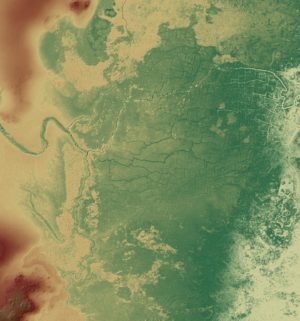
PROCEEDINGS OF THE NATIONAL ACADEMY OF SCIENCES—A study* explores how ancient Maya cultivated wetlands in Belize. Wetlands can function as farming fields during times of extreme weather events and provide evidence of environmental changes. However, current knowledge of how the Maya used wetlands for farming is limited. Timothy Beach and colleagues used airborne lidar surveys and radiocarbon dating to determine the chronology and ancient uses of 4 Maya wetland complexes in Belize’s Rio Bravo watershed. The area of wetland complexes totaled 14.08 km2. Although some field systems within the complexes dated between approximately 1,800 to 900 years ago, most dated to approximately 1,400 to 1,000 years ago. The wetlands served as large-scale, polycultural, agricultural systems for growing Maya crops, such as avocado, maize, and squash, and were active during extreme weather events, such as droughts, and times of population expansion in the Late Classic. The authors also determined that the Birds of Paradise complex is 5 times larger than initially thought, and the authors found an even larger complex. The findings suggest that wetland fields may have been adaptations to major shifts in Maya civilization as the demand for food increased, according to the authors.
___________________________

Pictured is the Birds of Paradise ancient Maya wetland field system and parts of the nearby Maya sites of Gran Cacao (bottom-left) and Akab Muclil (top-left) in northwestern Belize. Image courtesy of Timothy Beach, Sara Eshleman, Samantha Krause, Sheryl Luzzadder-Beach, and Colin Doyle
___________________________
Article Source: PNAS news release
*”Ancient Maya wetland fields revealed under tropical forest canopy from laser scanning and multiproxy evidence,” by Timothy Beach et al
___________________________
Advertisements




